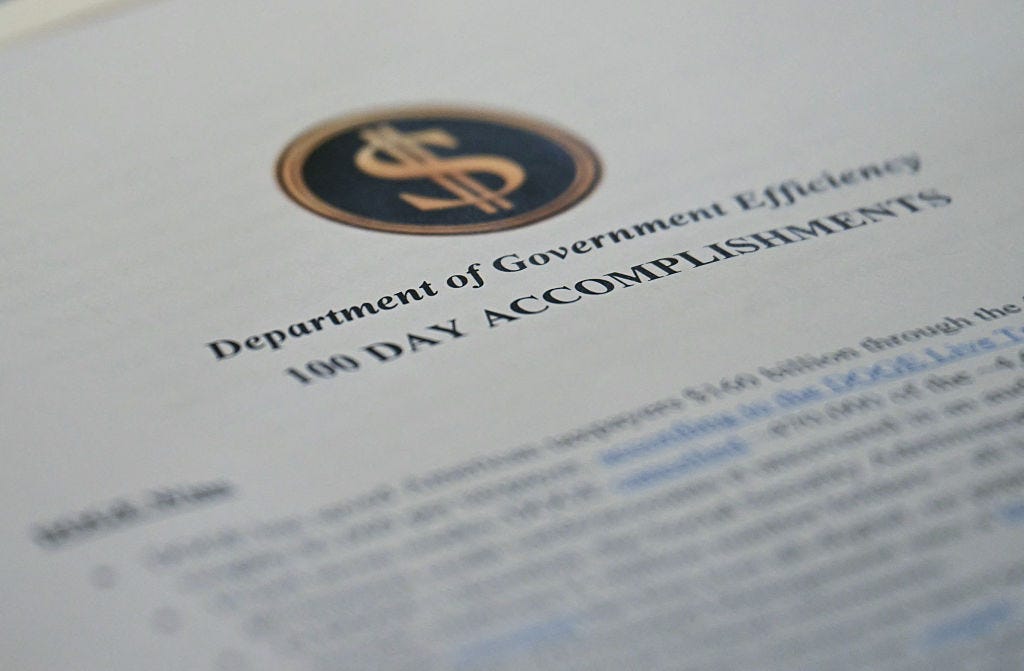How Elon Musk built a button to shut off the government
Researcher Nathan Tankus on the details of DOGE's plan to use tech against banking, institutions, and even citizenship — and what to do about it
He may not be a familiar face, but over the past decade, independent writer and researcher Nathan Tankus has become one of the most perceptive critics and analysts of America’s financial systems. As an alternative high school student, Tankus was inspired by a teacher who taught a deep-dive course on the 2009 financial crisis as it was happening, and then got involved in the economics working groups that sprang from the Occupy movement, where finance and banking experts and amateurs came together to imagine the future of finance.
Associated with the modern monetary theory camp of economists who have been thinking hard about the nature of money and how it shapes society, Tankus has concentrated on understanding the financial plumbing that makes the national and global economy work. Self-taught, he’s become so knowledgeable about banking’s underpinnings that he’s the guy Paul Krugman calls when he wants to talk through technical questions about how the Treasury Department operates.
In his newsletter, Notes on the Crises, Tankus has been uncovering the inner workings of what’s happening within Elon Musk and DOGE’s takeover of government agencies and institutions. If you are interested in really understanding the administrative coup and what it means for the country, you’ll want to read and subscribe.
Since much of Tankus’s work is highly technical, we reached out to talk about how regular folks — the millions and millions of people affected by the accelerating financial crisis — can make sense of what he’s found and understand why it matters. We talked about how what’s happening in the banking system upends everything we have taken for granted about money and savings, how the alliance between Silicon Valley and the right has brought us to the brink of a digital attack on citizenship, and why the only way out is through. You won’t want to miss this one.
So the people in Elon Musk’s DOGE camp have made an analysis a little bit like yours, seizing the instruments available on the back end of the financial system, but with the goal of destroying the system. They’re like the supervillains to your superhero, ripping out all the plumbing that you have worked to understand. How does that happen?
A lot of these big tech CEOs, they’ve created an ecosystem for themselves, these secret Signal chats, conferences, of course, Twitter itself. They've created this bubble. But in the Trump era, they took a second look, started meeting these right-wingers, and what the far right had been saying about the administrative state for decades suddenly made sense to them in a way that it hadn’t back in 2012.
They've always been anti-union, but had this understanding that they were going to supply all the good stuff society needed, and people wouldn’t need to organize against them.
There were people hanging around who had always had these far-right ideas, but it became generalized in a kind of zeal of the converted, where they became fully committed to what they were hearing from the far-right think tanks about the administrative state. So we got this kind of hypercharged version of the libertarianism that was aimed at gutting the administrative state. But now it's big techified — and this is the key.
If you're a tech person, what you start looking at is the technology. For someone like Elon Musk, you have to remember PayPal is where he made his money, and ultimately, he's still a payments person, down to his bones.
And if you're him, and you start doing whatever cocktail of substances that he's doing, you're asking yourself, “Why isn't there just a button? Why isn't there just a button that I could press?”
A button to turn off the administrative state — and, as you have suggested, there actually kind of is one?




